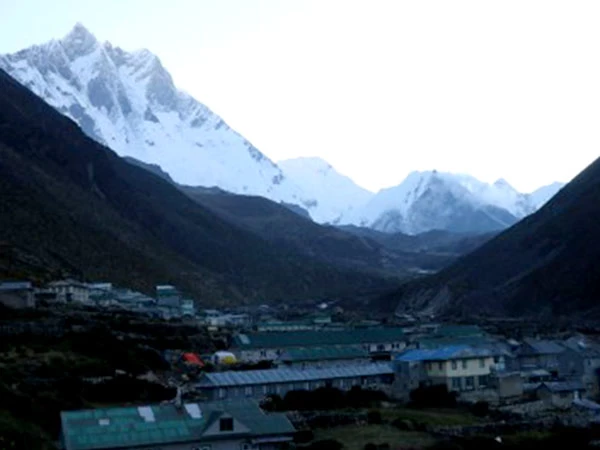Introduction
Welcome to the realm of extraordinary landscapes and breathtaking heights—Everest Base Camp. While trekking to the base camp of the world's highest peak is a thrilling experience throughout the year, January adds a unique charm to this adventure. Contrary to popular belief, this winter month presents a distinct and mesmerizing perspective of the Everest region. In this blog post, we'll delve into the wonders of Everest Base Camp trekking in January, exploring the challenges, rewards, and the unparalleled beauty that awaits those who dare to tread the snowy trails.
The Winter Magic: January in the Everest Region
January might not be the most conventional time for trekking in the Everest region, but it brings its own set of allurements. The landscape is transformed into a winter wonderland, with snow-capped peaks, frozen rivers, and crisp, clear skies. The trails are less crowded, offering a more serene and intimate connection with the Himalayan wilderness. As you embark on this journey, be prepared to be captivated by the unique blend of tranquility and adventure that January bestows upon the Everest Base Camp trek.
Weather Conditions: Embracing the Chill
Trekking in January comes with its challenges, mainly due to the colder temperatures. Daytime temperatures hover around freezing, while nights can plummet to sub-zero levels. However, with the right gear and preparation, the cold becomes a manageable companion on this trek. The clear skies during January offer stunning views of the surrounding peaks, creating a backdrop of unparalleled beauty. The crisp air and pristine snow-covered landscapes contribute to an otherworldly experience that is worth the extra layering.
The Trail Less Traveled: Enjoying Solitude in Serenity
One of the most significant advantages of trekking to Everest Base Camp in January is the reduced number of trekkers on the trail. Unlike the peak trekking seasons, where the trails are bustling with adventurers, January offers a more private and personal connection with the surroundings. The tranquility allows for a deeper appreciation of the natural beauty, providing a sense of solitude that is often elusive in busier months.
Unique Challenges: Navigating the Winter Wonderland
Trekking in January does come with its set of challenges. The trails may be covered in snow, making navigation a bit more demanding. However, with the help of experienced guides and proper equipment, these challenges can be turned into memorable experiences. Additionally, teahouses along the route remain open, providing warm shelter, hot meals, and a chance to connect with fellow trekkers by the fireside.
Cultural Encounters: Embracing Sherpa Hospitality
January might not be the peak trekking season, but the warmth of Sherpa hospitality remains ever-present. Local teahouses and villages offer a glimpse into the unique Sherpa culture, with the added bonus of a more intimate interaction with the locals. Learn about their traditions, share stories, and savor traditional Sherpa cuisine as you make your way to Everest Base Camp.
The Rewards: Panoramic Views and Personal Triumphs
As you ascend higher, the panoramic views of the Himalayas become increasingly spectacular. The snow-covered peaks, including the iconic Everest, present a mesmerizing spectacle against the clear blue skies. The sense of accomplishment upon reaching Everest Base Camp in January is unparalleled—a personal triumph over the winter challenges and a testament to your resilience and determination.
Tips for a Successful January Trek
Pack Wisely: Ensure you have the right gear for winter trekking, including insulated layers, a good quality sleeping bag, and waterproof boots.
Stay Hydrated: The cold weather can be deceptive, and dehydration is a common issue. Keep yourself well-hydrated throughout the trek.
Acclimatize Properly: Adequate acclimatization is crucial, especially in the winter months. Listen to your body and take the necessary rest days to adjust to the altitude.
Choose the Right Guide: A knowledgeable and experienced guide can make all the difference, especially in challenging conditions. Ensure you have a guide who understands the intricacies of trekking in January.
Capture the Moments: Don't forget to document your journey. The winter landscapes provide unique photo opportunities that you'll cherish for a lifetime.
Conclusion
Embarking on the Everest Base Camp trek in January is not just an adventure; it's a rendezvous with nature at its most raw and pristine state. The challenges of winter trekking are outweighed by the rewards of solitude, breathtaking views, and a unique connection with the Sherpa culture. As you stand at Everest Base Camp, surrounded by the majesty of the Himalayas, you'll realize that the winter trails have a magic of their own—a magic that only those who dare to trek in January can truly understand. So, gear up, embrace the chill, and get ready for an unforgettable journey to the roof of the world. Everest Base Camp awaits, and January is the perfect time to answer its call.
Contact us at,
WhatsApp : +977 9851031822
Email : highcampadventures@gmil.com




